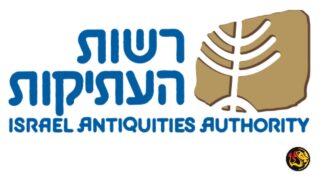Assyrian Inscription Unearthed Near Temple Mount Confirms Biblical Account of Hezekiah’s Rebellion
Key Facts
- Archaeologists uncover the first-ever Assyrian inscription found in Jerusalem, dating to 2,700 years ago.
- The one-inch fragment likely served as a royal seal or tax notice from Assyria to King Hezekiah of Judah.
- The artifact references a delay in payment — echoing the biblical account of Hezekiah’s rebellion in II Kings 18.
- The clay originated from the Tigris region, confirming direct Assyrian correspondence with Jerusalem.
- Discovery reinforces the historical reliability of the Bible and God’s enduring covenant with Israel.

(Worthy News) – Archaeologists in Jerusalem have uncovered an extraordinary 2,700-year-old pottery fragment inscribed with Assyrian cuneiform near the Temple Mount — the first written evidence of direct contact between the Assyrian Empire and the Kingdom of Judah ever discovered in the city. The find, announced by the Israel Antiquities Authority (IAA), offers striking confirmation of the biblical narrative of King Hezekiah’s resistance to Assyrian domination recorded in II Kings 18.
The tiny clay shard, just one inch wide, bears an inscription referencing a delay in payment, the first day of the month of Av, and the title of an Assyrian court official known as the “holder of the reins.” Experts say it was likely part of a bulla — a royal seal impression used to authenticate official documents — possibly a tax notice sent from the Assyrian emperor to the Judean king.
“This is the first Assyrian inscription ever found in Jerusalem,” said Dr. Peter Zilberg, an Assyriologist at Bar-Ilan University. “It may reflect the very episode described in Scripture when King Hezekiah delayed paying tribute to the Assyrian king Sennacherib.”
The artifact was discovered by Moriah Cohen, a staff member of the “Archaeological Experience” in Emek Tzurim National Park, who was sifting dirt from excavations conducted at the Davidson Archaeological Park near the Western Wall. “I was sifting through the dirt and suddenly noticed a sherd with strange writing,” Cohen recalled. “To realize I was holding something no one had touched for 2,700 years — that’s indescribable.”
The IAA excavation, directed by Dr. Ayala Zilberstein in collaboration with the City of David Foundation, revealed that the soil came from the remains of a large administrative structure dating to the late First Temple period. “This inscription proves we’re dealing with a significant royal building connected to the court and the king,” said Dr. Zilberstein.
Scientific analysis of the clay confirmed it originated not from Israel, but from the Tigris Basin region — the heartland of Assyria, where major cities such as Nineveh and Nimrud once stood. “The material is completely foreign to the Jerusalem area,” said Dr. Anat Cohen-Weinberger of the IAA. “It was likely sent here as an official document from one of the Assyrian centers.”
The discovery ties directly to the biblical account of Assyria’s campaign against Judah during Hezekiah’s reign:
“In the fourteenth year of King Hezekiah, Sennacherib king of Assyria came up against all the fortified cities of Judah and took them… So the king of Assyria imposed upon King Hezekiah of Judah a payment of 300 talents of silver and 30 talents of gold.” (II Kings 18:13–14)
The fragment’s reference to a delayed payment appears to mirror this historical tension. “Perhaps it describes a point of friction between the Kingdom of Judah and the great Assyrian Empire,” Zilberg said. “It helps connect the biblical narrative to historical sources in such a strong way.”
Israeli tour guide and historian Yoav Rotem told CBN News, “It’s a clay seal with a message from Assyria likely addressed to the king of Judah saying, ‘Send the tribute quickly by the first of Av — or the consequences will be severe.’ This directly relates to the biblical account of Hezekiah’s delayed tribute.”
The find has stirred excitement among both scholars and faith communities. “Know that our Bible is true,” Rotem added. “You can trust the Word of God.”
Ben Hilton of The Israel Guys reflected on the broader meaning: “This groundbreaking discovery near the Temple Mount not only verifies what Scripture has told us for thousands of years, but also reminds us that God’s Word stands the test of time — and His promises to Israel are everlasting.”
Dr. Zilberg summed it up: “This small fragment is like a flashlight in the fog of history. It shines light on the connection between archaeology, Scripture, and the living history of Jerusalem.”
💡 Did you know? One of the best ways you can support Worthy News is by simply leaving a comment and sharing this article.
📢 Social media algorithms push content further when there’s more engagement — so every 👍 like, 💬 comment, and 🔄 share helps more people discover the truth. 🙌
Latest Worthy News
If you are interested in articles produced by Worthy News, please check out our FREE sydication service available to churches or online Christian ministries. To find out more, visit Worthy Plugins.
